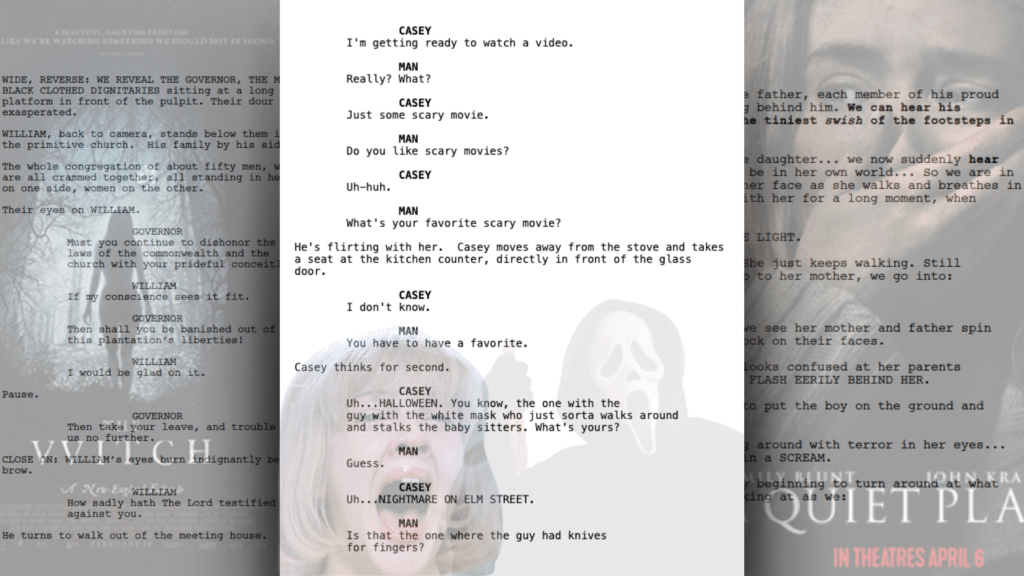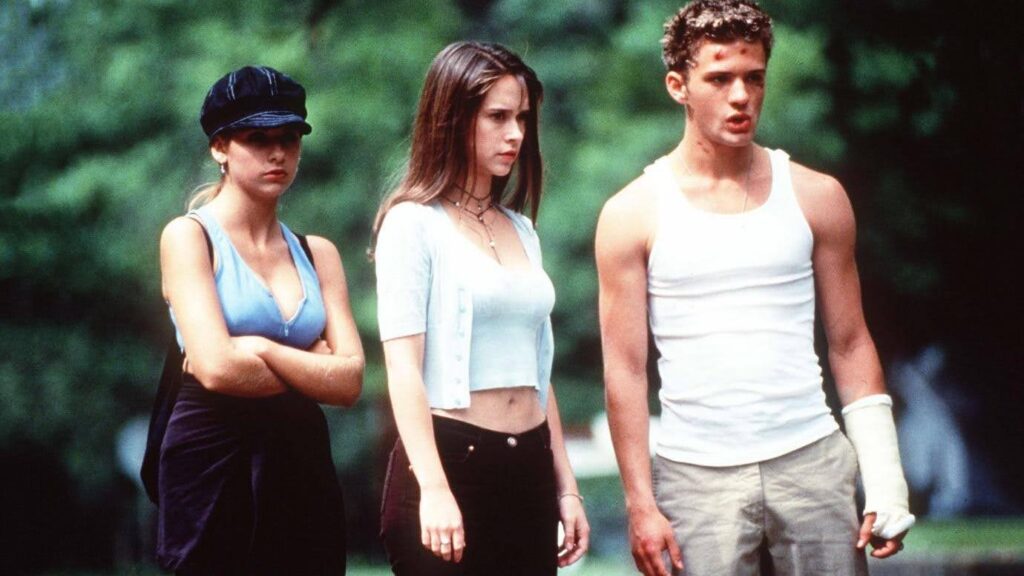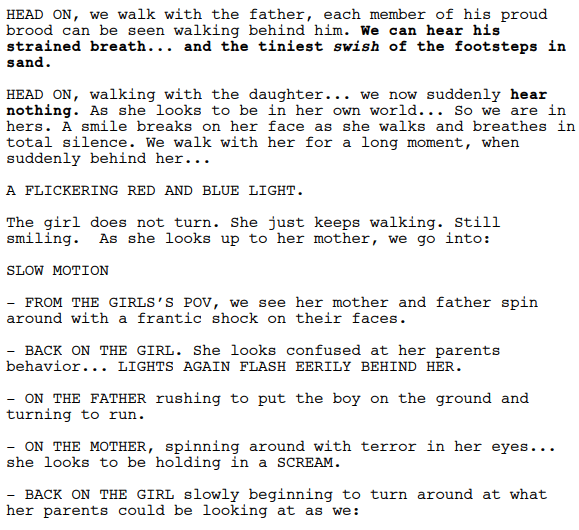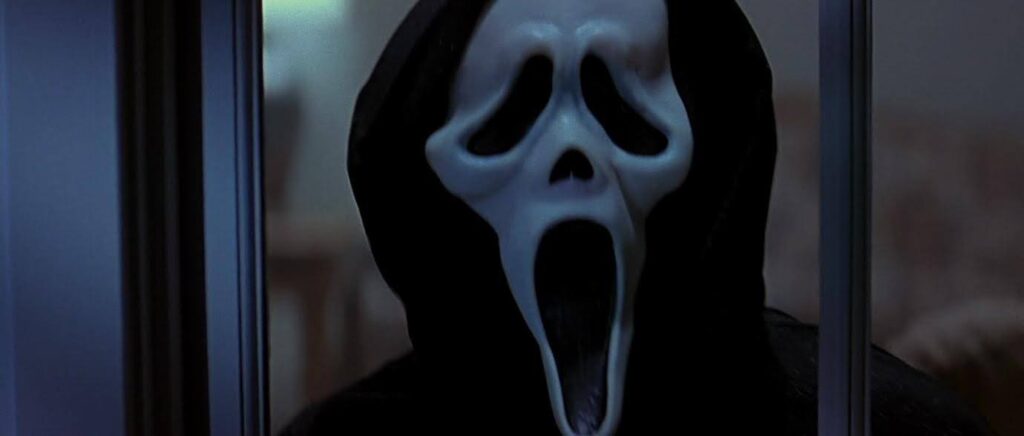
Welcome back to our blog series: Mastering Film Genres: The Definitive Screenwriter’s Guide! We’re overjoyed, ecstatic, thrilled, over the moon and delighted that you’re here with us (some might even say—we’re screaming).
To kick things off, we’ll explore the world of the horror genre and the movies that send a shiver down our spines. Please stay as long as you like – or dare!
You’re probably here because you want to write a horror script. A good choice – audiences love them! From psychological to supernatural and slashers, horror has been a consistent feature since the dawn of cinematic history.
You’ll find that the most beloved horror films follow a familiar framework that audiences recognize and instantly connect with. Many filmmakers play around with the framework to make their movies unique, but it’s important to understand conventions and core elements without descending into the world of cliché.
Audiences want to leave the movie theater thrilled, spooked, and hopefully afraid to sleep. Many horror fans are real enthusiasts and know the genre inside out.
In this article, we’ll explore the horror genre, its subgenres, how to plan your screenplay and craft a compelling story that will terrify audiences.
But that’s not all! In our next blog, we’ll move onto creating captivating characters and dialogue that will keep audiences watching.
Understanding the Horror Genre
Being clear on the type of horror your writing is the first step. Horror is an extensive genre with many sub-genres that scare in different ways with a certain cast of characters or tone. Before you write a word, consider what makes your movie scary.
Psychological horrors such as Black Swan (2010)—which we recently wrote about in our Internal vs. External Conflict piece—and recent release Speak No Evil (2024) use mental states or psychological conditions to create paranoia, replacing physical monsters with matters of the mind.
Supernatural horrors often use ghosts and demons not from the world we know, to terrify characters and audiences. Sometimes the Devil will appear in different forms, focusing on a religious theme. One of the most famous supernatural horrors in The Exorcist (1973), with the Paranormal Activity franchise (2007-2021) dominating the 2010s.
Slasher films have a certain set of characteristics, where a person or group of people stalk and murder others to avenge a past wrong. The ‘final girl’ trope is common in slasher movies. For example, in Halloween (1978) when Michael Myers escapes during transit to a court hearing, he begins to stalk Laurie Strode, a threat of his murderous behavior that got him imprisoned, returning. Other classic examples of slashers include The Texas Chain Saw Massacre (1974) and I Know What You Did Last Summer (1997).

Of course, horror can also be combined with other genres, such as sci-fi and fantasy. Alien (1979), The Crow (2024) are great examples of these crossovers.
As you’re working out the sub-genre for your horror script, there are some elements you must consider: your protagonist, antagonist, dialogue, theme, pacing, tropes, archetypes, and structure. Yes, you should consider these with any genre you’re writing in. However the horror sub-genres are specific, so it’s important to know what they are and how they’re used.
Crafting The Premise
The core of all horror movies focuses on our deeply integrated human fears and instincts that have developed over thousands of years of evolution:
- Fear of the Unknown
- Fear of Death
- Fear of Loss of Control
- Fear of Isolation
When writing a horror screenplay, we must keep our chosen fear at the forefront of our minds, and your premise should tap into those fears in a new and thrilling way.
Those thrills come from grounding the fear in reality, even if your concept sits within the supernatural sub-genre. Set your story in a familiar/safe location or amid a relatable situation, such as moving house or starting a new job, etc. By setting the scene in a sense of reality and then subverting it with a horrific event, your scares will be even more terrifying.
Unlock the door to your next horror masterpiece.
Sign up for Celtx and start crafting scares today!
Another way to hook your audience is to take a pre-existing premise and give it a twist to keep it fresh and exciting. It’s only when you know the rules that you can bend them! For example, a couple move into a rumored haunted house, and it turns out the ghostly inhabitants aren’t the ones who are dead – but those who sold the house to the couple are.
Alongside the fears that drive horror movies is the moral dilemma that sits with characters acting against the threat. Increase tension by giving your protagonist almost impossible choices.
In terms of your structure for your horror movie, the horror paradigm is a great place to start. Split into three acts, the paradigm gives you a basic framework to build upon.
- Act 1 – The protagonist encounters a threat
- Act 2 – They struggle with the threat
- Act 3 – They escapes the threat (or not!)
Once you have your broad premise, it’s time to boil it down and explain what your movie is about in one or two sentences. The best way to present this is in logline format. How do I write a logline, you ask…
Structuring Your Horror Logline
All loglines, no matter the genre, should detail the protagonist (who is your main character?), the inciting incident or threat (what starts the horror?), the conflict (what must they do to survive or resolve the issue?) and the hook of the story (what makes this story fresh and intriguing?). It doesn’t matter which order these are presented in. What matters is that you describe your idea concisely and compellingly.
Let’s take a look at the logline for 2022’s Smile.
After witnessing a bizarre, traumatic incident involving a patient, a psychiatrist becomes increasingly convinced she is being threatened by an uncanny entity.
Here, we can see the logline order:
- The Inciting Incident: “After witnessing a bizarre, traumatic incident involving a patient…”
- The Protagonist: “…a psychiatrist…”
- The Conflict: “…increasingly convinced that she’s being threatened…”
- The Hook: “…by an uncanny entity.”
The hook at the end of the logline is especially effective, as it leaves the prospective audience with questions. What kind of entity? What makes it uncanny? How is the protagonist being threatened? It makes us want to watch it.

Got a killer logline? Celtx can help you format your spooky script easily—
all you have to do is dare to begin.
START screamWRITING TODAY
Building Tension and Suspense
Tension and conflict are the bread and butter of all movies, but it’s especially difficult in horror to raise and then maintain the stakes for our characters. Things need to get progressively worse, and the characters need to be forced into action.
To create suspense and keep your viewers on edge, there are several techniques you can use:
Withhold information
The less an audience or character knows about what’s terrifying them, the better, at least at the beginning of the movie. As the story progresses, consider what you can slowly reveal. This both helps build tension, but also makes the characters more relatable. As the audience finds out more alongside them, they’ll feel more at one with them and feel like they’re in the situation with them.
Setting, setting, setting
Whether your story is based in a familiar setting or in a strange, isolated location, make sure to play around. Pathetic fallacy and the time of day can make a huge difference to the tone of your movie.
When describing your setting, consider lighting, shadows, sound and symbolism, but don’t be too excessive. Horror is as much about what we don’t know, so leaving room for the unknown is vital.
Are your characters in a small space, making them feel claustrophobic, or is it pitch black around them? Are their senses impeded in any way by the environment around them?
For example, in A Quiet Place (2018), the extraterrestrial antagonists, while blind, had an acute sense of hearing, meaning our protagonists had to keep near silent for most of the film. Taking away humanity’s prime form of communication raised the stakes and tension, just part of the movie’s crazy success.
Here’s an excerpt from the early scenes of the movie, showing just how much impact silence has:

Unreliable narrators
Due to a scary situation they’ve been put in, the protagonist is likely going to be an unreliable narrator in this case. This makes an audience feel on edge and heightens the terror they’re feeling. Including some sort of additional internal or external conflict for your protagonist can add to the tension you’re trying to build.
Pacing and foreshadowing
Always be aware of how you’re pacing your story and the timeline of events. How can you convey that time is running out? How do you show a character’s declining mental state?
Set in the 17th century, The Witch (2015) is a slow burner, building tension gradually through its setting and a growing feeling of dread. The supernatural elements of the movie slowly creep in, with long moments of isolation and silence with slow dialogue throughout.
You’ll see from the opening moments of The Witch, the religious setting permits the slower dialogue, with each character carefully choosing their words in the seriousness of the situation.

On the more fast-paced side, Evil Dead (2013) flies by after the evil force is unleashed. Characters are constantly in danger with minimal downtime between scares. Quick cuts and the continual escalation of violence sets this at the other end of the pacing spectrum.
In the middle of these two examples is Jaws (1975), which builds tension at a rhythmic pace, with slower scenes interrupted by ferocious shark attacks. The famous music helps us perceive the danger ahead, as well as alternating tension and release all the way through.
Foreshadowing is also a great way to set pace in a horror movie and can play a huge role in a later scare. If you notice it as a viewer, you are duly rewarded by the end of the movie with the satisfaction that you were right all along (no other prizes, I’m afraid!)
Stuck? Find out how Celtx can help you complete your script’s missing scenes || Celtx Blog
The Sixth Sense (1999) is one of the most famous examples of foreshadowing in the horror genre, with the indications that Malcolm has been dead all along, hiding in plain sight through the entire movie. He wears the same clothes; he only interacts with Cole, and the other characters all get the chills when he’s near them.
Scream (1996) also foreshadowed its ending well, with the killers identified in the early minutes of the film. When we’re introduced to the characters, we hear them all talking about the death of one of their classmates. One of them, Randy, suggests Stu is the murderer, the camera cutting to another classmate, Billy, who looks worried.

There are so many ways to create tension in a horror and play with the pace to keep your audience on their toes. We always recommend planning your scripts using beat sheets, treatments and scene outlines, but this is even more important in horror, as building suspense needs to be carefully mapped out to ensure that the build up to the scares, and the scares themselves, are as impactful as possible.
Conclusion
As you begin your journey into the dark and thrilling world of horror screenwriting, remember that the magic of a great horror film lies in its ability to tap into our deepest fears and deliver tension in unexpected ways. Whether you’re crafting a slow-burn psychological thriller or a fast-paced slasher, understanding your subgenre, developing a compelling premise, and mastering pacing are key to captivating your audience.
Have an idea for a horror premise? We’d love to hear it!
Focus on your story, not your formatting.
Let Celtx’s Script Editor automatically apply all industry rules while you focus on the story.
<< Go back — Mastering Film Genres: The Definitive Screenwriter’s Guide
Up Next:

From Dreams to Screams: How to Write a Horror Script Pt. 2
Dive deeper into building unforgettable characters, writing spine-chilling dialogue, and crafting the perfect ending to leave your audience in awe (and fear!)
Click here to continue…
